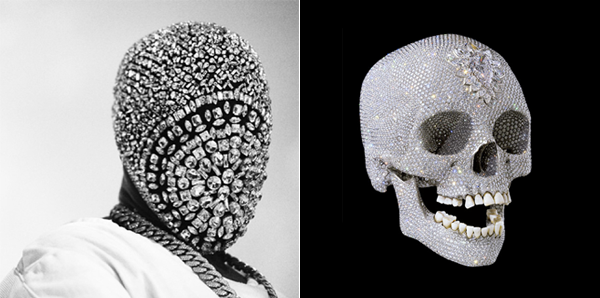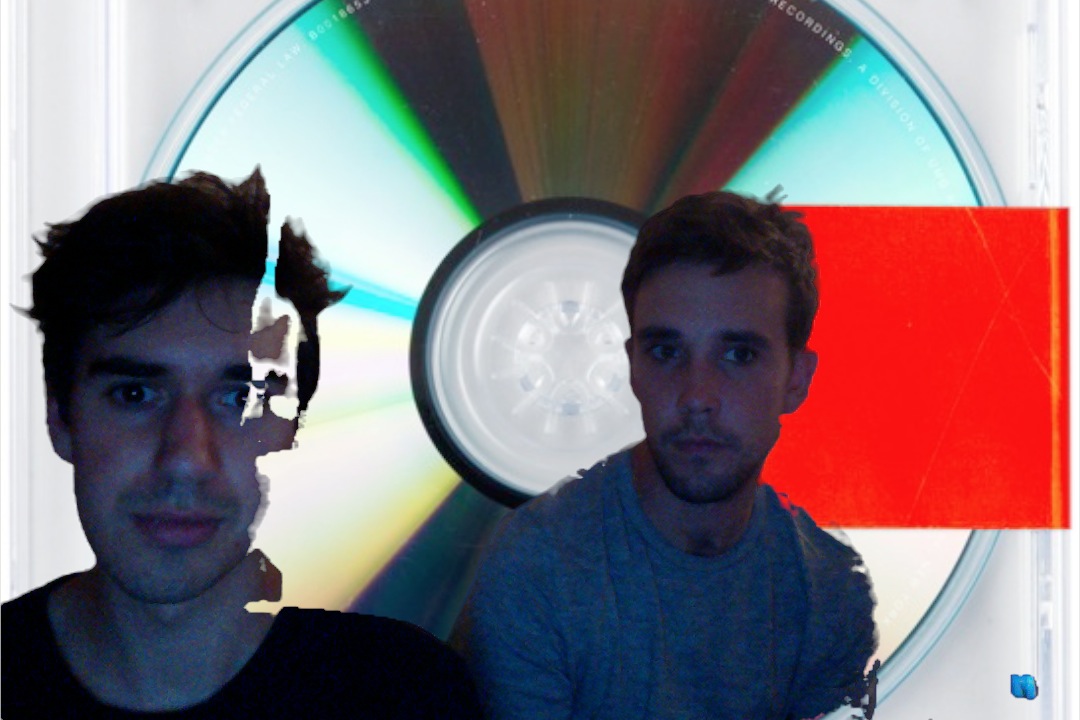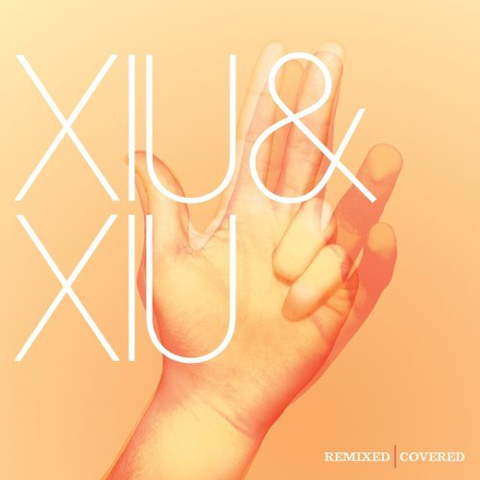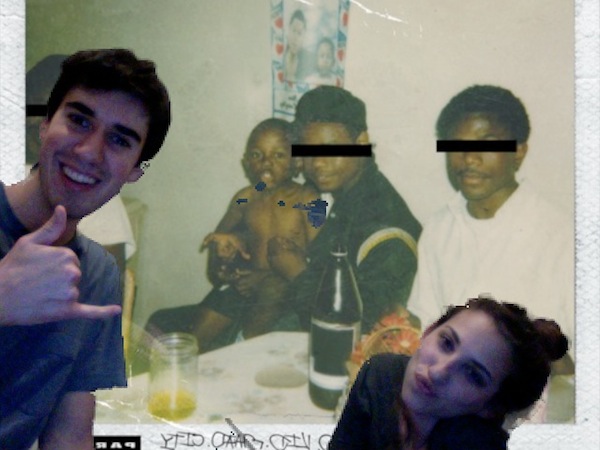Kanye West Yeezus Listening Party
Music by Kanye West. Commentary by Lakshmi Singh, Leonard Lopate. Beer by Pabst Brewing Company.
Love of God

Kanye West, in keeping with a truncated periphery necessary for megalomania, has upgraded from hipster shutter shades to a high couture diamond mask (by Belgian fashion designer Maison Martin Margiela) whose stones, growing in carat, funnel into his money machine, that is, mouth. His favorite puns involve you swallowing his cum, which is why I prefer to listen to him with a can of ginger ale handy. Like cheesy pop songs of the mid-90s with that embarrassing rap interlude, today’s hip hop (Kanye, Drake, Frank Ocean) strains itself with melody, often auto-tuned. As Yeezus is released today, drying out all the fervent leaks a week prior, we’ve found — or perhaps created — a black Jesus whose relation to our sins seems less compassionate than complicit. Short of dying for our sins, he would rather watch. The sadness of the “real” Jesus story is that he was gracefully on our side, which seemed too good to be true, so we killed him. It is the story of a learned cynicism, our grand expulsion. In 1966, John Lennon said The Beatles were more popular than Jesus and was met with outrage from both the Christian right and populace. Lennon later explained he was referring to the decline of religion (though his Jesus complex eventually resurfaced with his Abbey Road white suit and Imagine white piano). Damien Hirst’s For the Love of God (2007) is a sculpture about economics. It cost £14,000,000 to produce and was exhibited at an asking price of £50,000,000, an instant 350% inflation for patrons perhaps too dense to see the sarcasm. Hirst has been obsessed with a Dahmer-esque clinical curiosity of what’s inside us, though his perverse pathos stops short at a grant. His work mocks the mortal’s concept of immortality. Self-aware to a degree, Kanye’s diamond mask probably has little to do with the diamond mining industry in Africa, which accounts for two-thirds of the world’s diamonds, and whose upsetting trade empowers warlords and insurgents. If there’s any thing to say, we are enamored with the spectacle of depth. The stage as a pulpit. Grandiose entitlement is rather American, and with that, Kanye stops being its critic. Tired of splooge allusions, his “I am a God” repeats the title over and over: I am a God / Hurry up with my damn massage, though each time I read that line I see “message,” perhaps delusional that there is one.
Tunnel vision

Hairband videos of the late-’80s seemed meta in how they “set up” the song by showing the band, usually conceitedly, approach the stage during the opening riff or drum beat, to kind of glorify, or prolong, the imminent explosion of the song (rap songs, similarly, often begin with vignettes of rappers speaking into the mic about how they are about to start rapping). Bon Jovi’s “Livin’ on a Prayer” (1986), whose titular contraction of “living” serves the lingo of our times, was in many ways the ultimate rock anthem video, with its talkbox riff, rigged flying theatrics, and artsy black & white lavender tint. I would “air band” it (an intricately spliced combination of air-guitar, -drums, -bass, and -vocals), running into furniture, discovering bruises the next day which unfairly implicated my parents. The song tells the story of Tommy and Gina, a young working-class couple whose love for each other compensates for their stout lives — while real life Ginas preferred displaying their mammalian buoyancies at the composer of the song, whose slo-mo moments right before the nipple highlighted videos of this nature. Of milk’s offering, newly satiated from Korova bar, we come across dystopian bros entering a tunnel in which they are to beat a homeless man to death. Anthony Burgess’s prophecy can now be seen on homeless beating videos, snuff meets Punk’d, in which teenage boys competitively break faces with cinder blocks and bats, the retina display of life perhaps more convincing than a video game. Misandry just happens. One may wonder if all videos are essentially games, life’s diorama inside a cartridge, the control pad’s rubber buttons as numb nipples whose virtual and distant volition is an actual child, silhouetted with his co-conspirators, in infamous anonymity.
Any thoughts on the new Bowie album? I’m halfway through and “Where Are We Now?” and “Valentine’s Day” at least seem decent?
Xiu Xiu’s Wig Master vs. Why?’s Wig Master
On the 2006 Xiu Xiu album The Air Force, there’s a song, “Wig Master.” Lately I’ve been listening a lot to a cover version done by Why?, on the 2007 album Remixed and Covered. It’s easily my favorite piece on that album.
I was looking for the lyrics of the Why? version and I realized 1.) they’re not already online (that I could find) and 2.) they’re substantially different from the Xiu Xiu version.
So I thought I’d type them up, and put up a post about the differences. This is that post!
Kendrick Lamar good kid, m.A.A.d city Listening Party
Music by Kendrick Lamar. Commentary by David Fishkind, Adam Humphreys. Beer by Coors Brewing Company.
Some album covers

Belle and Sebastian album covers always bothered me because they would remind me of The Smiths. Both bands are morbidly precious — or preciously morbid? — and English; well, the former is Scottish but who cares. England is to Scotland what China is to Korea what Spain is to Portugal. As in no one cares. I have a friend who has this rule where she won’t fuck a guy if she finds Belle and Sebastian on his playlist. I can understand: I have Belle and Sebastian on my playlist and I wouldn’t fuck me. It bothers me that you take a photo, run it through a color filter and slap some typographically “literary” text on it and consider it an album cover because, right, like your fans are all sensitive art students with melted candles and a suicidy razor blade by the bathtub; and emphatic or compulsive design seems uncool and corporatey, and your life is all about casual. Casual sex; casual resume sending; casual cereal for dinner. Every time I see one of these album covers I want to have a vasectomy and not subject my child to this world and vice versa. I love it when there’s an acoustic guitar lying around at a party — the kind of party with salsa and guacamole in coffee mugs because everyone’s too mellow to actually cook — and always the least-laid guy needs to pick it up and start playing the four chords he knows. Then five to seven grimly codependent-ish people all reluctantly stay quiet and feign attention while he plays something out of key. Then he starts sincerely singing, which is basically a metaphor for the world: we make it horrible with our feelings. Some asshole says do you know any Wilco and all the more amicable networky people into electronic music with better clothes and skin are on the roof now drinking beers, holding the bottle against the sun so that it seems that the sun is inside the bottle, setting into the amber sea.
A mixtape inspired by The Orange Eats Creeps, a novel by Grace Krilanovich

Just wrapped up a two week session on The Orange Eats Creeps in my 21st Century Horror class, and one of my awesome students, DJ Dodd, created this badass mixtape: “For those who are interested in further exploring the dark underbelly of society hinted at by The Orange Eats Creeps, here is a streamable and downloadable mixtape that features the twisted, crusty, and often sublime characteristics found within the novel.”
A link to the mixtape, plus a track list after the break.



